PDF chapter test TRY NOW
The Great split in Jainism:
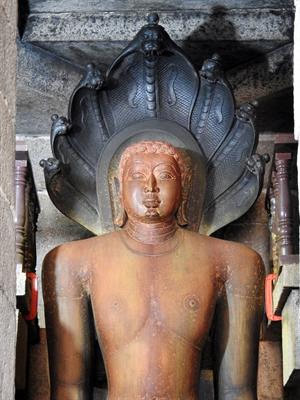
Bhadrabahu
During the Later part of the Jainism History, different sects emerged within Jainism. These sects are said to be the by-product of a “Great Famine” that struck the lands of Magadha which forced a group of Jain people under the leadership of “Bhadrabahu '' to move towards the Southern parts of India.
Bhadrabahu: He is a Jainist scholar who was also well known in history as the “Guru of Chandragupta Maurya”, the greatest king of the Maurya dynasty. He was also known as the “Sutra Kevali” or the one who is capable of reciting all the Sutras.
The Famine that struck the Northern settlements lasted for \(12\) years, the group under Bhadrabahu in South India adopted rigorous practices during this period, while the Northern followers of Jainism took liberal traditions.
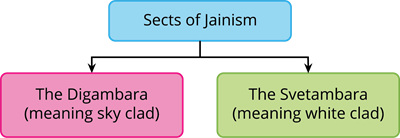
Svetambaras:
1. They were considered the liberals among the two sects and were progressive in thoughts and actions.
2. Sthulabadra was considered a great exponent of this sect.
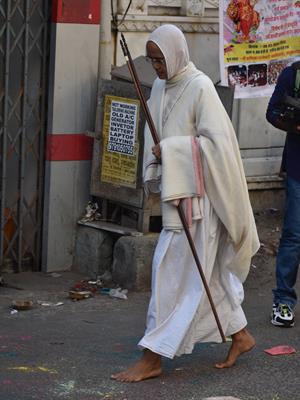
Svetambaras
3. They are allowed to wear white clothes to cover themselves and can also have Rajoharana (Broom with woollen threads) to clean their place.
4. People of this sect followed only four of the five principles propounded by Mahavira. They didn’t adopt the practice of Brahmacharya.
5. They strongly believed that women could also achieve liberation similar to men.
Digambaras:
1. Male followers of this sect are prohibited from wearing clothes, so they practised complete nudity. Female followers were allowed to wear plain white sarees.
2. Bhadrabahu was considered the greatest exponent of the Digambara sect.
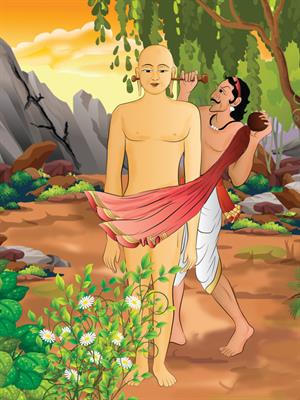
Digambaras
3. The Digambaras are highly conservative as they followed strenuous methods to attain liberation. They believed that women are not capable of attaining liberation.
4. Digambaras religiously followed all the five principles spelt by Mahavira.
The Literature of Jains:
The Jain literature is believed to be started from the period of the First Tirthankara named “Adinatha''. His teachings went missing, and most of them were forgotten during the later periods, which were later revived by the Tirthankara’s.
The Jaina literature was further divided into two groups as the interpretation and preaching differed among the Svetambaras and the Digambaras. The two parts of Jain literature are given below.
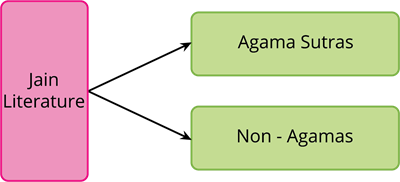
The Agama Sutras:
The Agama Sutras are canonical texts of Jains which laid more emphasis on the teachings of Mahavira. These texts are said to be compiled by the immediate disciples of Mahavira in Ardha-Magadhi or the Jain Prakrit language.
Dristivada: This is believed to be the last or the 12th Agama, which has been lost in the due course of time.
Non-Agamas:
The Non-Agama part of the literature consists mainly of the commentaries and detailed explanations of the various Jain texts. These are written in numerous languages like Old Marathi, Gujarati, Prakrit, Apabhramsa, Tamil, Kannada, English and German.
It also contains 41 Sutras which are believed to be the most important of the Non-Agama literature, combined with “Mahabashya or the Great Commentary” along with 12 other commentaries.
The Non-Agama part of the literature includes:
\(\text{12 Upa-Angas}\): These are explanations to the Angas and are believed to be the set of instructions.
\(\text{5 Mulasutras}\): This text serves as the base of the life of monkhood which teaches the basic doctrines of Jainism.
\(\text{11 Angas}\): These are the ideals followed by the Svetambara sect of Jains.
\(\text{5 Chedas}\): This text speaks about the behaviour and conduct of the monks and nuns.
Kalpasutra: It was written by Bhadrabahu which contained the biographies of Mahavira and Parshavanath. The text was believed to be compiled during the period of Maurya’s.
Various other Jain texts were compiled in Indian languages like Tamil, Kannada and Hindi, which helped the proliferation of Jain tenets to the nook and corner of the Indian Subcontinent.
Tiruthakkadevar: He was the author of the Jain religious epic named “Jivaka Chintamani” which speaks about a king who turned into a monk in his later days.
The texts from these languages blended the conditions of the state with their literature which were later seen as an invaluable asset among historians.
Reference:
Bhadrabahu: Shivram / Shutterstock.com
Svetambaras: johntallboy / Shutterstock.com
